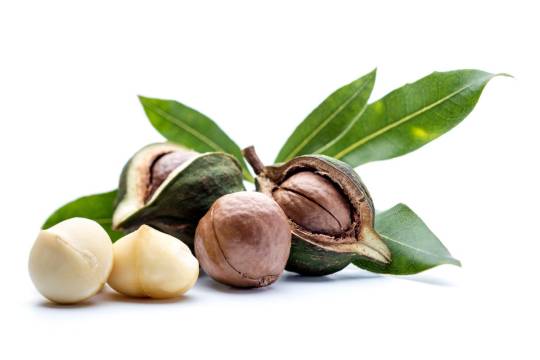Don't wanna be here? Send us removal request.
Text
Macadamia Market Size, Share, Growth, Trends, and Forecast to 2022-2028
Over the forecast period, 2022-2027, the macadamia market is expected to grow at a 6.8% CAGR.
The COVID-19 pandemic's influence on the Macadamia Market has been negligible. During the worldwide lockdown, macadamia output, demand, and supply chain have remained stable. Thankfully, the global COVID-19 epidemic had little or no influence on South Africa's macadamia industry, as export markets remained open and prices remained high, albeit shipment to China was seriously impacted. Most South African nut producers and processors had implemented severe health and safety procedures to protect their employees and families from becoming infected with the virus.

The market is growing at a faster rate due to the growing importance of healthy eating, which has been boosted further by the pandemic, and consumers are increasingly choosing nuts as a healthy snack option and incorporating them into their daily diets, resulting in long-term healthy growth of the market.
Australia, Hawaii in the United States, Kenya, and South Africa are the world's largest producers of macadamia nuts. According to the Australian Macadamia Association, favourable meteorological conditions with good precipitation in the majority of districts resulted in good production in 2020. In South Africa, however, poor conditions during flowering and early nut development, mature orchards, trimming, and insects and illnesses resulted in a decreased macadamia crop in 2020.
On the consumer front, Global Macadamia Market is gaining traction, with increased demand coming mostly from European countries. The widespread use of processed macadamia in many industrial categories, such as food and beverage and cosmetics and personal care, is also contributing to the global market expansion of these nuts.
Segments of the Macadamia Industry
Macadamia is a genus comprising four tree species native to Australia that belong to the plant family Proteaceae. Macadamia nuts are native to northeastern New South Wales, central and southeastern Queensland, and the Northern Territory.
The Geographical Segmentation of the Macadamia Market (United States, Canada, Guatemala, Germany, Netherlands, China, Australia, Japan, Vietnam, Brazil, South Africa, and Kenya). Production Analysis (Volume), Consumption Analysis (Value and Volume), Export Analysis (Value and Volume), Import Analysis (Value and Volume), and Price Trend Analysis are all included in the report. The study estimates and forecasts the market in terms of value (USD thousand) and volume (metric ton).
Rising commodity demand and a lack of supply in the global market produce disparities in the commodity's demand-supply situation, necessitating investments in the industry and contributions from government organisations, which may act as a growth stimulus for the market's development. The Hawaii Macadamia Nut Association, for example, has conducted research on nutrition management and leaf sampling, integrated pest management, orchard floor, canopy management, micronutrient management, and many other areas. One such effort was on macadamia fertilisation, which included all of the crucial aspects impacting fertilisation, important soils in macadamia nuts, identifying nutritional status, soil analysis, tissue concentration for bearing macadamia nuts, and other factors.
In addition, the Southern African Macadamia Farmers' Association, a South African organisation, worked on projects including Phytophthora control, pruning, other pest control and management, cultivar breeding, and so on in 2019. Additionally, Global Tea's attempt to increase macadamia nut planting in Malawi is supported by a $4 million joint investment announced in 2018 by the International Financial Corporation (IFC) and the Global Agricultural and Food Security Program (GAFSP). IFC is also collaborating with macadamia cooperatives throughout the country to develop their management capabilities, allowing them to better serve and support growers. As a result of all of these activities, production has increased while the quality of the nuts has improved.
The Australian macadamia crop has expanded steadily over the years, owing largely to persistent investment in productivity improvements and more than doubling tree nut exports. Macadamia is an Australian native that is primarily farmed in northern New South Wales and Bundaberg. However, these nuts are also grown in the Northern Rivers. In 2018, increase was noted throughout all growing zones, including relatively newer locations such as Emerald north of Bundaberg and Yamba south of Ballina, which has driven the country's macadamia nut production.
Australian macadamia is the most sought after in the world, with 75 percent of the country's production exported. The Australian Macadamia Society predicted the farm gate value of macadamia output in 2020 to be USD 293 million, based on a five-year average production of around 46 thousand metric tonnes. The market for macadamia nuts is projected to be driven by shifting consumer attitudes towards healthier diets, as well as the growing relevance of macadamia nuts in international markets.
1 note
·
View note